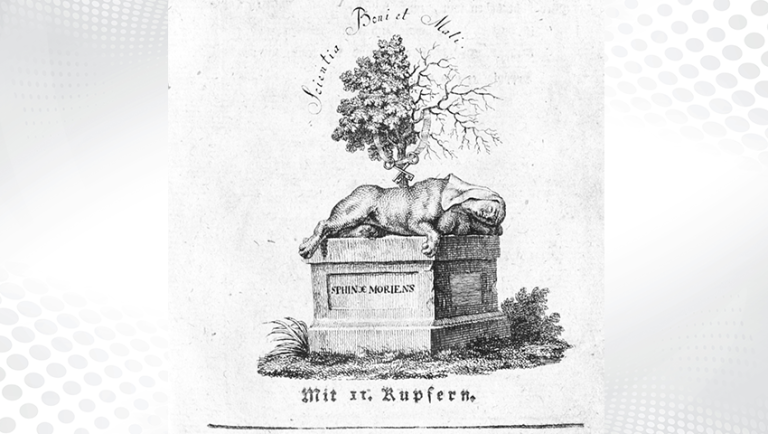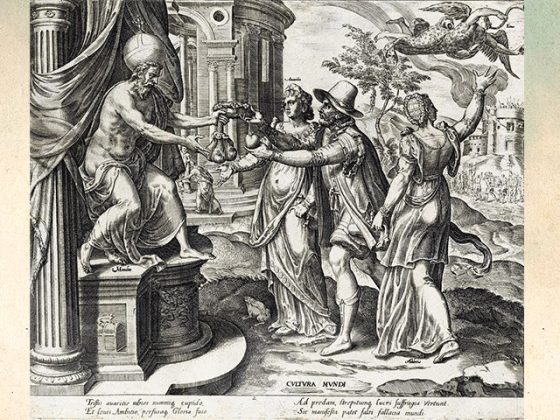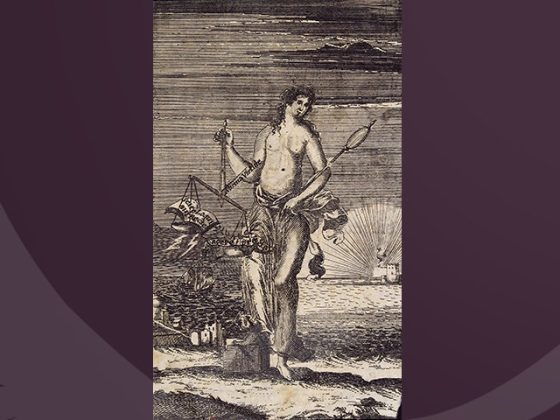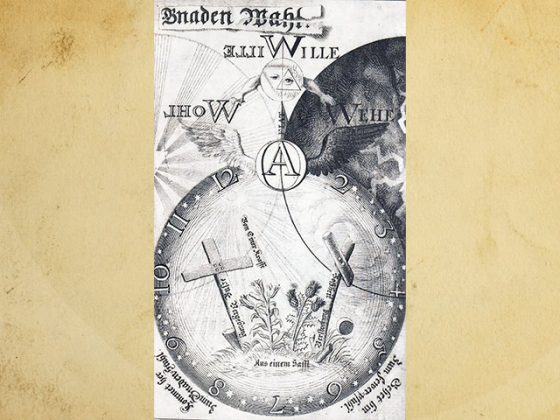Highly esteemed friends:
I am pleased to send you, on this occasion, another engraving by Karl Von Eckartshausen, which was published in 1790, two years after the first edition.
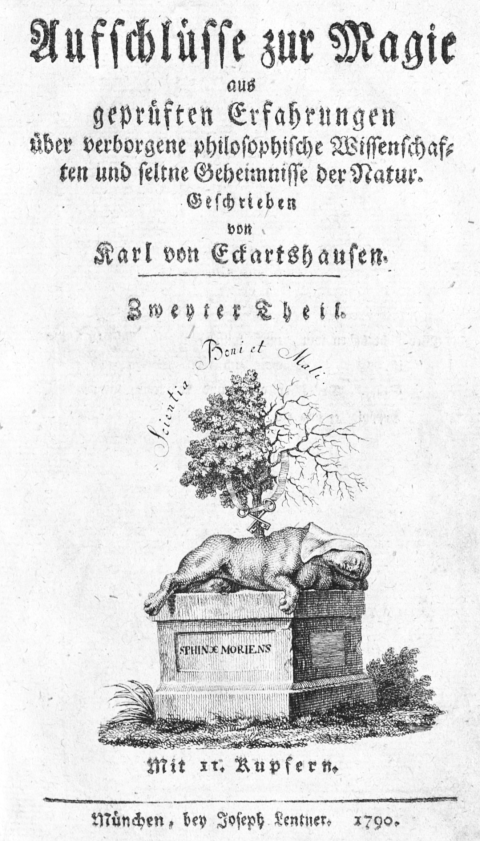
In this artistic work we can first see a sphinx that seems dead, or at least lying on a CUBIC STONE, and on its back we observe a tree with one half flowering and the other half totally dry. A ribbon holds the two keys of Saint Peter above the sphinx. We also observe two words above the tree: SCIENTIA BONI ET MALI.
What is all this?
First, we must affirm that the sphinx is the image of Nature. That is why the fruits of GOOD and EVIL will always be present in the tree representing it. This tree is the same one mentioned in the Christian Holy Scriptures, the tree of EDEN.
Through Gnosis we have been told that such a tree is the sexuality and the latter is a double-edged knife. Sexuality, correctly directed, redeems man, but placed at the service of our psychological aggregates it enslaves us and degenerates us, as is happening more and more with our pseudo-civilization.
It is already known to all of us that the fruit of the Edenic tree is the apple, and that the devotees of the path have the right to nourish themselves with the aromas that it expels but not to swallow it, for this is what we call fornication. It is very sad that all our humanity has remained for centuries and millennia wanting to lose its sexual energies ─swallowing the apples─, all of which was distancing it from the supra-divine energies of the BEING and, consequently, turning it into a perverse humanity dominated by the animal Ego and its mother the Beast whose number is 666.
To the pure and sensible devotees of the narrow path this knife serves to destroy their animal psyche and resume their normality and divine innocence that the human race once possessed. This is possible through the transmutatory art that Gnosis teaches us.
In the work THE DWELLINGS OF THE PHILOSOPHER by the V.M. Fulcanelli the words of Eugenio Canseliet appear, telling us in one of his prologues:
“Totus mundus in maligno (mali ligno) positus est; everyone is installed in the devil (in the tree of evil).
Behold, then, the tree of the knowledge of good and evil, that of Genesis, from which the Creator commanded Adam not to eat, signifying from the beginning the inevitable and disastrous consequence: “For in the day that you eat of it you shall surely die; in quocumque enim die comederis ex eo, morte morieris”.
However, now that we have gotten into the matter, Fulcanelli himself adds these words in his alchemical work:
“All classical authors are unanimous in recognizing that the Great Work is an abridgement, reduced to human proportions and possibilities, of the Divine Work. And since the adept must contribute the best of his qualities if he wants to succeed, it appears just and equitable that he should collect the fruit of the Tree of Life and profit from the marvelous apples of the garden of the Hesperides [understood here to mean knowing how to use the apple of desire].”
Speaking now of the dry tree of our engraving, the famous Adept Fulcanelli then tells us:
“… it is indeed our dry tree, the same that had the honor of giving its name to one of the oldest streets of Paris, after having appeared for a long time on a very famous street sign. Edouard Fournier tells us that, according to Sauval, this sign could still be seen around 1660. It indicated to passersby “an inn of which Monstrelet speaks”, it was well chosen for such a dwelling, and from 1300 on, must have served as a lodging for pilgrims returning from the Holy Land. The dry tree was a memory of Palestine; it was the tree planted very close to Hebron, which, after having been “green and full of leaves” since the beginning of the world, lost its foliage on the day our Lord died on the cross, and dried up. […]
Such is the hieroglyph adopted by the philosophers to express metallic inertia, that is to say, the special state that human industry gives to reduced and molten metals […]
The sages tell us that they are dead, at least in appearance, because it is impossible for us, under their solid and crystallized mass, to guess the latent, potential life hidden in the depths of their being. They are dead trees, although they still retain a remnant of moisture, which will no longer give leaves, flowers, fruits or, above all, seed.”
What is all this, the reader will ask?
Alchemical language was for centuries metaphorical in character. Only the blessed Master Samael Aun Weor had the audacity to show or reveal for our humanity all these secrets of the Ars Magna. The crude reality of what is called the dry tree here is none other than the misfortune of the human being who has been pushing it for millennia to fornicate –that is, to lose its sexual seed–. That is why we are told that this tree ─once green─ produced leaves, flowers and fruits, but it dried up to this day since the crucifixion of the V.M. Aberamentho, because, despite His teachings, the humanoid lineage continued unceasingly violating the sixth commandment of the Mosaic Decalogue. Certainly, although moisture remains in human sexuality, its nature no longer produces spermatozoa or ovules and therefore it is a dead seed, not suitable for doing the inner Great Work.
If we talk about the sphinx of our engraving we are faced with another mystery. She is representative of the whole Nature by encompassing in her structure the four elements, and she is prostrated, or more or less asleep, or perhaps defeated, to beg man to awaken her from her lethargy, revive her, renew her life, etc. That is why the two keys of Saint Peter appear above her. Those keys are the symbol of Sulfur and Mercury in our laboratory work, a subject on which we have spoken abundantly in other of our treatises. Whoever works with these two ingredients achieves reconciliation with the sacred sphinx of the hermetic mysteries. That is our task, patient reader…
The Latin words SPHINX MORIS mean ‘the dead sphinx’, reaffirming what we have said earlier.
The mysterious rock or stone on which the emblematic sphinx is shown does not point to anything other than the Philosopher’s Stone, sacred rock or cubic matter that carries the seal of the solar force. In our engraving that stone appears to be a little deteriorated, as if it had been forgotten or abandoned. And it is true that human ignorance, having intentionally distanced itself from the Spirit, has also distanced itself from its mother, Nature.
On the tree, as we have already mentioned, appear in Latin the two words that are related to it: Scientia Boni et Mali, which are to be translated as ‘Good and Evil’, because they refer to the tree of the knowledge of good and evil.
Allow me to add a few sentences for your reflection:
“Intelligence could not long play the role of the heart.”
La Rochefaoucauld
“Nothing purifies except intelligence.”
Oscar Wilde
“The vaster an intelligence is, the more it suffers from its limits.”
E. Thiaudiere
“There is no light that is kindled in the intelligence that will not kindle its fire in the heart.”
Ahrens
“There is absolutely no recourse when intelligence is lacking.”
Saint Teresa of Jesus
IUCUNDI ACTI LABORES.
─’Pleasant are the works done’─.
KWEN KHAN KHU


